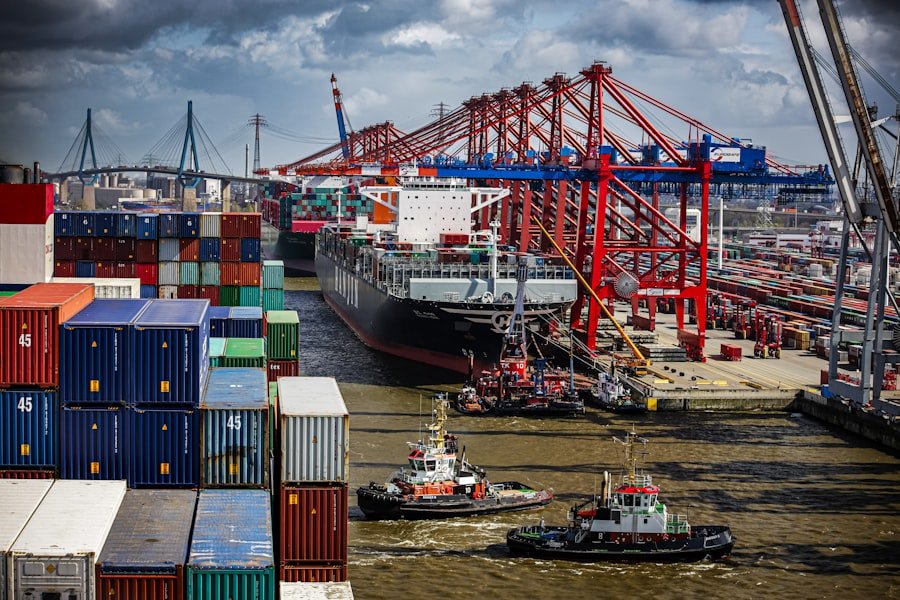The concept of the value chain, introduced by Michael Porter in his seminal work “Competitive Advantage” in 1985, has become a cornerstone of strategic management and business analysis. At its core, the value chain refers to the series of activities that a company undertakes to deliver a product or service to the market, from initial conception through to final delivery and beyond. This framework allows businesses to dissect their operations into distinct segments, enabling them to identify where value is added at each stage of the process.
By understanding these components, organisations can optimise their operations, reduce costs, and enhance customer satisfaction, ultimately leading to improved profitability and market positioning. In an increasingly competitive global marketplace, the value chain serves as a vital tool for businesses seeking to differentiate themselves from their rivals. It provides a structured approach to analysing internal processes and external interactions, allowing firms to pinpoint inefficiencies and areas for improvement.
As companies strive to meet the ever-evolving demands of consumers, the value chain framework offers insights into how they can innovate and adapt their offerings. By focusing on the entire lifecycle of a product or service, organisations can create a holistic view of their operations, ensuring that every aspect contributes positively to the overall value proposition presented to customers.
Summary
- The value chain is a series of activities that a company performs to deliver a valuable product or service to the market.
- Components of the value chain include inbound logistics, operations, outbound logistics, marketing and sales, and service.
- The value chain is important in business as it helps companies identify areas of competitive advantage and cost reduction.
- Analyzing the value chain can help businesses identify opportunities for differentiation and cost leadership.
- Implementing value chain analysis in business strategy can lead to improved efficiency, cost savings, and increased customer satisfaction.
Understanding the Components of the Value Chain
The value chain is typically divided into primary and support activities, each playing a crucial role in the overall process of delivering value. Primary activities include inbound logistics, operations, outbound logistics, marketing and sales, and service. Inbound logistics encompasses the receiving and warehousing of raw materials, while operations involve transforming these inputs into finished products.
Outbound logistics refers to the distribution of these products to customers, and marketing and sales activities are focused on promoting and selling the offerings. Finally, service activities ensure that customers receive support after their purchase, enhancing satisfaction and loyalty. Support activities, on the other hand, include procurement, technology development, human resource management, and firm infrastructure.
Procurement involves acquiring the necessary resources for production, while technology development focuses on innovation and improving processes. Human resource management is essential for recruiting, training, and retaining talent within the organisation. Firm infrastructure encompasses the company’s systems and structures that support its operations, including finance, planning, and quality control.
Together, these components create a comprehensive framework that allows businesses to analyse their operations systematically and identify opportunities for enhancement.
Importance of the Value Chain in Business

The significance of the value chain in business cannot be overstated; it serves as a foundational element for strategic planning and operational efficiency. By breaking down complex processes into manageable components, organisations can gain a clearer understanding of how each segment contributes to overall performance. This clarity enables businesses to identify strengths and weaknesses within their operations, allowing them to allocate resources more effectively and prioritise initiatives that will yield the highest returns.
Furthermore, by focusing on value creation at each stage of the chain, companies can enhance their competitive positioning in the marketplace. Moreover, the value chain framework encourages a customer-centric approach to business strategy. By understanding how each activity impacts customer satisfaction and perception of value, organisations can tailor their offerings to better meet consumer needs.
This alignment not only fosters loyalty but also drives repeat business and referrals. In an era where customer expectations are continually rising, leveraging the value chain to enhance customer experience is paramount for long-term success. Ultimately, businesses that effectively utilise this framework are better equipped to navigate challenges and seize opportunities in an ever-changing economic landscape.
Analyzing the Value Chain for Competitive Advantage
To gain a competitive advantage through value chain analysis, organisations must conduct a thorough examination of each component’s contribution to overall performance. This involves assessing both cost efficiency and differentiation strategies at every stage of the chain. For instance, a company may find that its inbound logistics are overly costly due to inefficient supplier relationships or excessive inventory levels.
By addressing these issues—perhaps through renegotiating contracts or implementing just-in-time inventory practices—the organisation can reduce costs while maintaining quality standards. Additionally, differentiation can be achieved by enhancing specific activities within the value chain that resonate with customers. For example, a business might invest in advanced technology during its operations phase to improve product quality or speed up production times.
Such innovations not only streamline processes but also create unique selling propositions that set the company apart from competitors. By continuously analysing and refining each component of the value chain, organisations can develop strategies that not only lower costs but also elevate their brand perception in the eyes of consumers.
Implementing Value Chain Analysis in Business Strategy
Implementing value chain analysis within a business strategy requires a systematic approach that begins with mapping out all relevant activities. This mapping process involves identifying key players involved in each segment of the chain and understanding how they interact with one another. Once this groundwork is established, organisations can begin evaluating performance metrics associated with each activity.
This evaluation may include cost analysis, time efficiency assessments, and quality control measures that provide insights into how well each component is functioning. Following this assessment phase, businesses should prioritise areas for improvement based on their findings. This could involve investing in new technologies that enhance operational efficiency or re-evaluating supplier relationships to ensure better pricing structures.
Additionally, fostering cross-departmental collaboration can lead to innovative solutions that improve overall performance across the value chain. By embedding value chain analysis into their strategic planning processes, organisations can create a culture of continuous improvement that drives long-term success.
Examples of Successful Value Chain Management

Numerous companies have successfully leveraged value chain management to achieve remarkable results in their respective industries. One notable example is Apple Inc., which has meticulously crafted its value chain to ensure high-quality products and exceptional customer experiences. From sourcing premium materials for its devices to maintaining stringent quality control during manufacturing processes, Apple has established a reputation for excellence that resonates with consumers worldwide.
Furthermore, its innovative marketing strategies effectively communicate the unique features of its products, reinforcing brand loyalty among customers. Another exemplary case is Toyota Motor Corporation, renowned for its efficient production system known as “Lean Manufacturing.” Toyota’s approach focuses on minimising waste while maximising productivity throughout its value chain. By implementing just-in-time inventory practices and fostering strong relationships with suppliers, Toyota has been able to reduce costs significantly while maintaining high-quality standards in its vehicles.
This commitment to continuous improvement has not only positioned Toyota as a leader in the automotive industry but has also set benchmarks for operational excellence that many other companies aspire to emulate.
Challenges and Limitations of the Value Chain
Despite its many advantages, value chain analysis is not without challenges and limitations. One significant hurdle is the complexity involved in accurately mapping out all activities within a company’s operations. As businesses grow and evolve, their processes may become increasingly intricate, making it difficult to maintain an up-to-date understanding of how each component interacts with others.
This complexity can lead to oversights or misinterpretations during analysis, ultimately hindering effective decision-making. Additionally, external factors such as market fluctuations or changes in consumer behaviour can impact the effectiveness of value chain strategies. For instance, a sudden increase in raw material prices may disrupt cost structures across various activities within the chain.
Companies must remain agile and responsive to these external pressures while continuously refining their value chain strategies. Furthermore, reliance on technology can pose risks; if systems fail or data becomes compromised, it could severely disrupt operations across multiple segments of the value chain.
Future Trends in Value Chain Management
As we look towards the future of value chain management, several trends are emerging that will shape how businesses operate in an increasingly interconnected world. One prominent trend is the growing emphasis on sustainability and ethical practices throughout the value chain. Consumers are becoming more conscious of environmental issues and social responsibility; therefore, companies must adapt by integrating sustainable practices into their operations—from sourcing materials responsibly to minimising waste during production processes.
Another significant trend is the rise of digital transformation within value chains. The advent of advanced technologies such as artificial intelligence (AI), machine learning (ML), and blockchain is revolutionising how businesses manage their operations. These technologies enable real-time data analysis and enhanced visibility across supply chains, allowing organisations to make informed decisions quickly and efficiently.
As companies continue to embrace digital tools and platforms, they will be better equipped to respond to market demands while optimising their value chains for maximum effectiveness. In conclusion, understanding and effectively managing the value chain is essential for businesses seeking competitive advantage in today’s dynamic marketplace. By dissecting operations into primary and support activities, organisations can identify areas for improvement that enhance efficiency and customer satisfaction.
The importance of this framework extends beyond mere cost reduction; it fosters innovation and strategic alignment with consumer needs. As companies navigate challenges and embrace future trends such as sustainability and digital transformation, those that leverage value chain analysis will be well-positioned for long-term success in an ever-evolving business landscape.
For those interested in understanding the intricacies of the value chain and its impact on business operations, it’s beneficial to explore related financial concepts that can influence a company’s performance within its value chain. A pertinent article that delves into this is Sources of Finance, which provides a comprehensive overview of various financing options available to businesses. This knowledge is crucial for any business looking to optimize each segment of their value chain, from inbound logistics to after-sales services, by securing the right type of funding to support these activities.
FAQs
What is the value chain?
The value chain is a concept that describes the full range of activities that a company performs to deliver a valuable product or service to the market. It includes all the processes and activities involved in creating, producing, marketing, and delivering a product or service to customers.
What are the primary activities in the value chain?
The primary activities in the value chain include inbound logistics, operations, outbound logistics, marketing and sales, and service. These activities are directly involved in the production and delivery of a product or service.
What are the support activities in the value chain?
The support activities in the value chain include procurement, technology development, human resource management, and firm infrastructure. These activities are essential for supporting the primary activities and the overall functioning of the company.
How does the value chain concept help businesses?
The value chain concept helps businesses to understand the full scope of their operations and identify areas where they can create value and competitive advantage. By analysing each activity in the value chain, businesses can improve efficiency, reduce costs, and enhance their overall performance.
What is the importance of the value chain in business strategy?
The value chain is important in business strategy as it helps companies to identify their strengths and weaknesses in the value creation process. This understanding allows businesses to make informed decisions about how to allocate resources, improve processes, and differentiate themselves from competitors.
